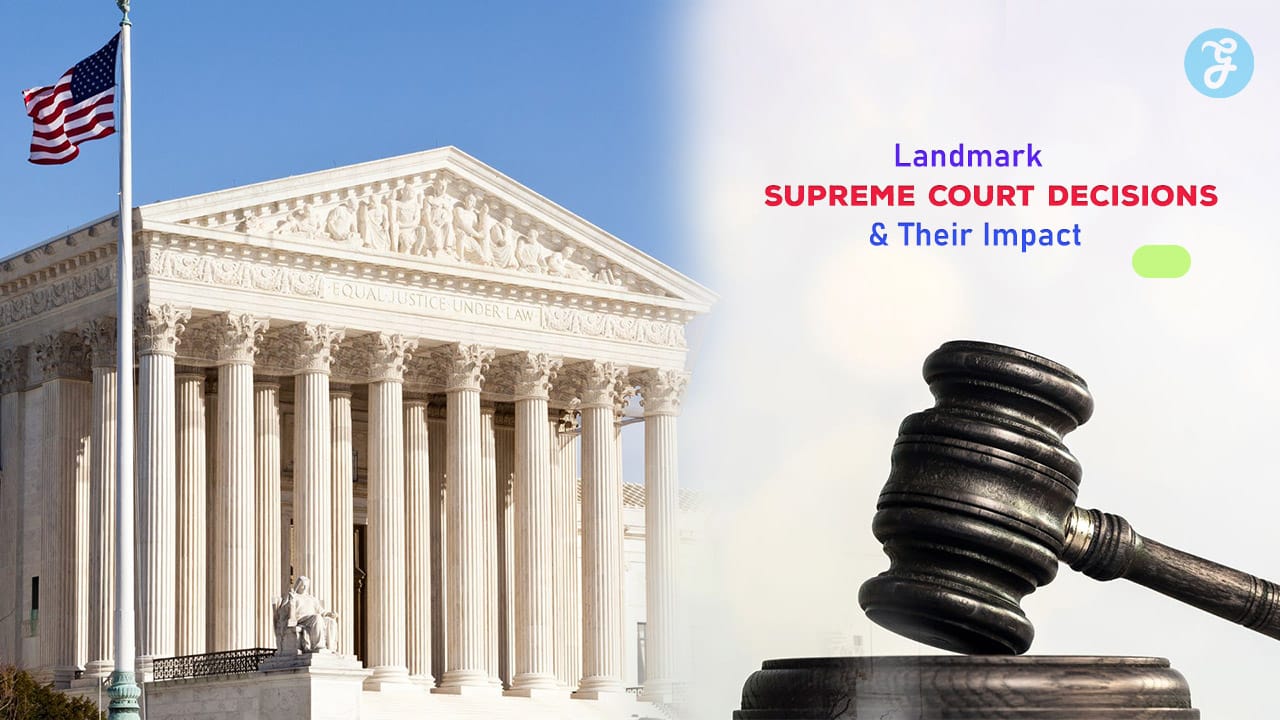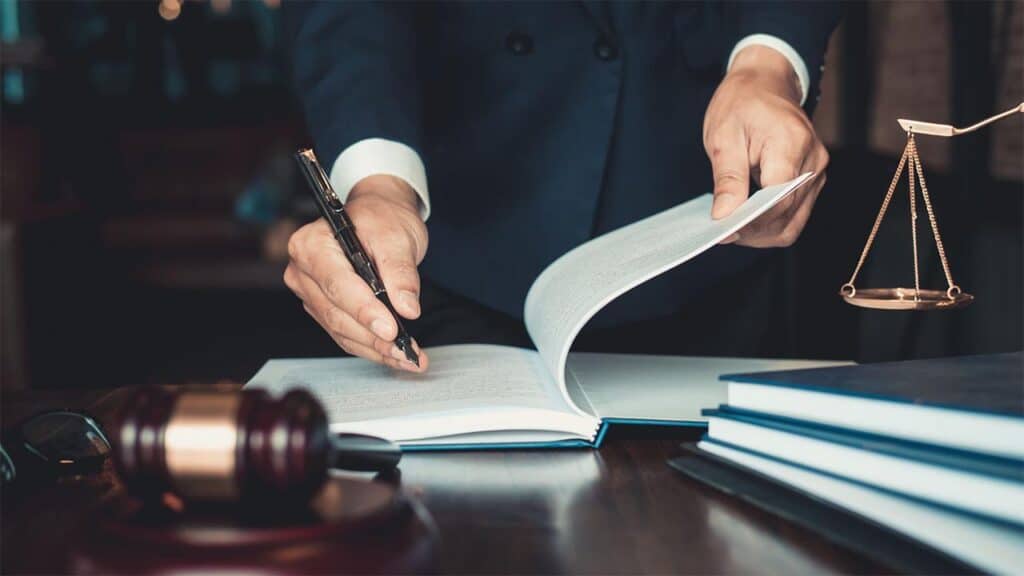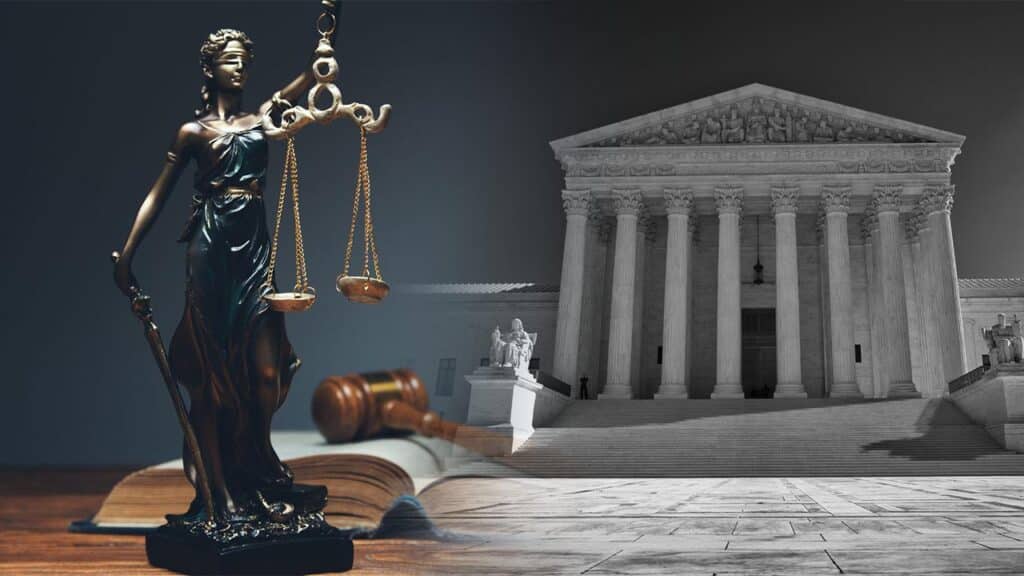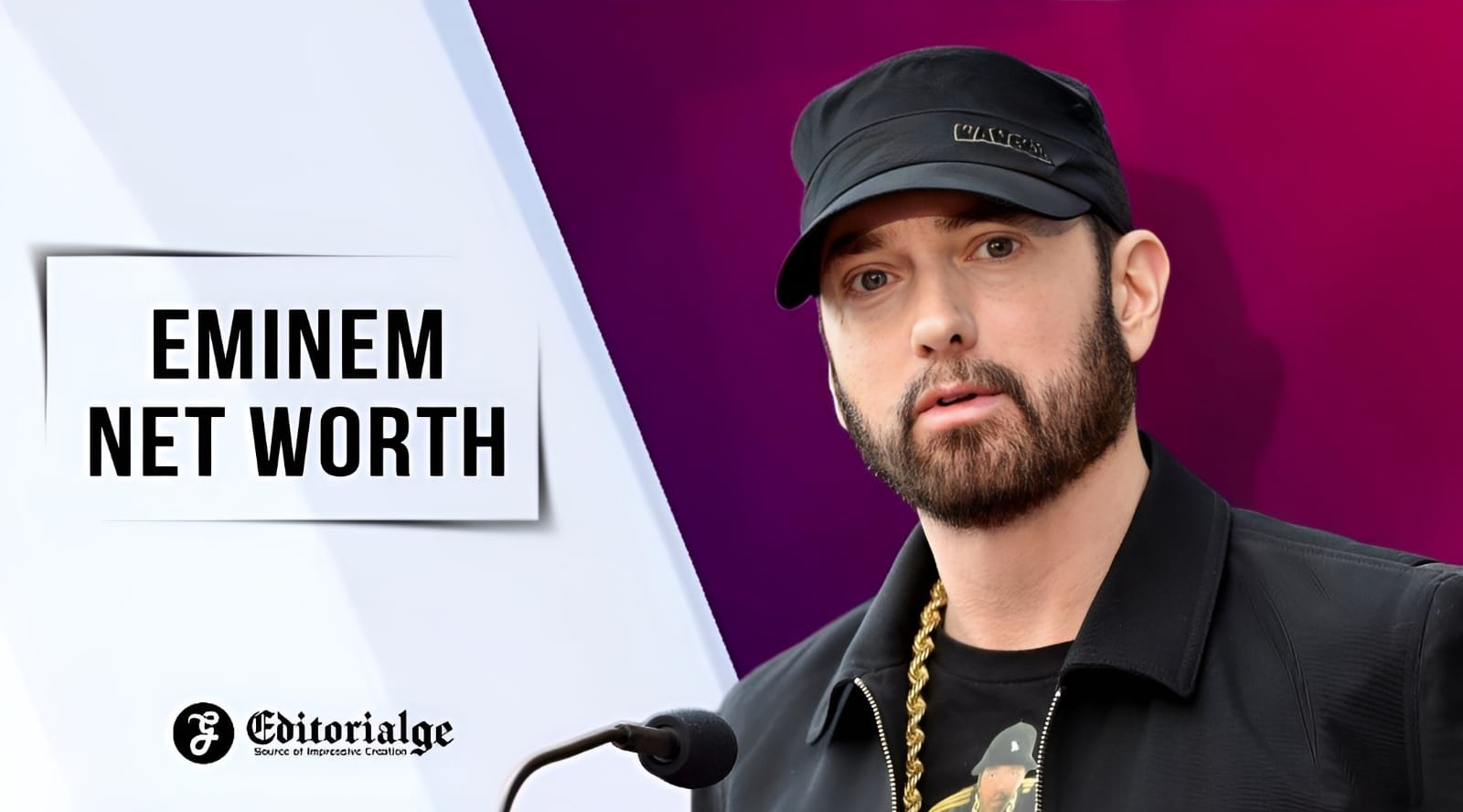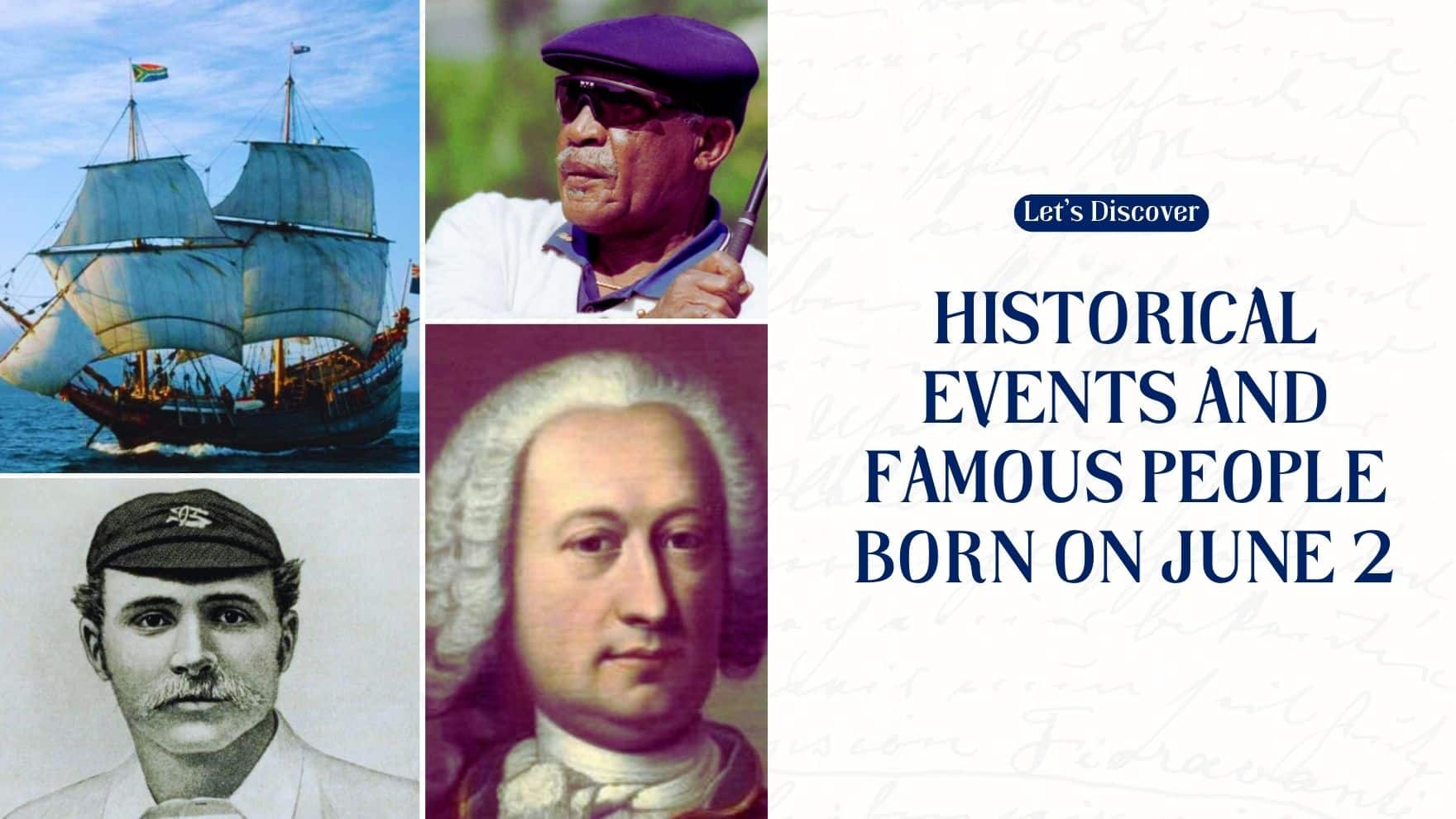The US Supreme Court has been pivotal in shaping American laws, policies, and social norms. Over the years, landmark rulings have addressed critical issues such as civil rights, federalism, criminal justice, individual liberties, and more.
These decisions reflect the evolving interpretation of the US Constitution and profoundly impact the lives of millions of people .
This detailed overview examines 15 of the most influential Supreme Court decisions, exploring the circumstances behind each case, the ruling’s significance, and its lasting impact on American society.
1. Marbury v. Madison (1803)
The Case:
Marbury v. Madison established the foundational principle of judicial review, which allows the Supreme Court to invalidate laws that violate the Constitution.
The case arose during the political turmoil following the 1800 election when outgoing President John Adams appointed several justices of the peace, including William Marbury, in the final days of his administration.
However, incoming Secretary of State James Madison refused to deliver Marbury’s commission, prompting Marbury to file suit .
The Decision:
Chief Justice John Marshall delivered the unanimous opinion, ruling that while Marbury was entitled to his commission, the Court lacked the authority to issue it under the Judiciary Act of 1789.
Marshall declared part of that act unconstitutional, establishing the Supreme Court’s power of judicial review.
Impact:
- Judicial Review :
This ruling cemented the judiciary’s role as a co-equal branch of government by allowing it to strike down laws that conflict with the Constitution.
- Strengthened Checks and Balances :
By establishing that the judiciary could limit the power of Congress and the president, the decision created a crucial balance between the branches of government, ensuring no one branch could dominate.
- Enduring Legacy :
Marbury v. Madison set a precedent for the Supreme Court’s role in interpreting the Constitution, a function that has significantly shaped the development of American law for over two centuries.
2. Brown v. Board of Education (1954)
The Case:
This landmark case challenged the doctrine of “separate but equal,” which had legally justified racial segregation in public schools since the 1896 Plessy v. Ferguson ruling. Linda Brown, a Black third-grade student, was denied access to an all-white school in Topeka, Kansas. Her family, along with others, filed a lawsuit claiming that segregation in public schools was unconstitutional.
The Decision:
Racial segregation in public schools violates the Equal Protection Clause of the 14th Amendment, the Court, presided over by Chief Justice Earl Warren, decided in a unanimous decision. The Court concluded that “separate educational facilities are inherently unequal” and ordered the desegregation of public schools across the nation.
Impact:
- Overturning Segregation:
The ruling struck down the legal basis for racial segregation in public education, setting the stage for desegregation in other public institutions.
- Catalyst for the Civil Rights Movement:
The decision energized the burgeoning civil rights movement, leading to further legal and social challenges to racial inequality and injustice across the United States.
- Enduring Legacy:
Brown v. Board of Education is regarded as one of the most significant decisions in U.S. history, laying the foundation for future civil rights victories, including the Civil Rights Act of 1964 and the Voting Rights Act of 1965.
3. Roe v. Wade (1973)
The Case:
Roe v. Wade was a groundbreaking case that challenged a Texas law prohibiting most abortions. Jane Roe” (a pseudonym for Norma McCorvey) filed the suit, arguing that Texas’ abortion law violated her constitutional right to privacy under the Due Process Clause of the 14th Amendment.
The Decision:
In a 7-2 decision, the Supreme Court ruled that the right to privacy extends to a woman’s decision to have an abortion.
However, the Court also ruled that this right must be balanced against the state’s interests in regulating abortions, leading to the establishment of a trimester framework:
- During the first trimester, the decision is left to the woman and her doctor.
- During the second trimester, states can impose regulations related to maternal health.
- In the third trimester, states can prohibit abortions, except when necessary to protect the life or health of the mother.
Impact:
- Legalized Abortion Nationwide:
The ruling struck down state laws that banned abortion, making the procedure legal across the United States.
- Ongoing Political Controversy:
Roe v. Wade sparked decades of legal, political, and moral debate over reproductive rights, leading to numerous challenges and attempts to restrict or overturn the decision.
- Women’s Rights Movement:
The ruling was seen as a victory for women’s rights and bodily autonomy, reinforcing the principle that decisions about reproduction should be made by women, not the government.
4. Miranda v. Arizona (1966)
The Case:
Ernesto Miranda was arrested in Arizona for kidnapping and rape. Miranda confessed to the crime after police interrogated him without informing him of his rights.
His confession was used against him in court, leading to his conviction.
Miranda later appealed, arguing that his confession was obtained in violation of his Fifth Amendment rights against self-incrimination.
The Decision:
In a 5-4 decision, the Court ruled that suspects must be informed of their rights before police interrogation, including the right to remain silent and the right to an attorney. This ruling gave birth to the “Miranda warning,” now a standard practice in law enforcement.
Impact:
- Miranda Rights:
Law enforcement agencies across the country are now required to inform individuals of their constitutional rights upon arrest. These include the right to remain silent and the right to legal counsel.
- Criminal Justice Reform:
The ruling emphasized the protection of individual rights during criminal investigations and helped ensure that confessions obtained under duress or without legal counsel would not be admissible in court.
- Public Awareness of Rights:
The decision has increased public awareness of constitutional protections, making it clear that individuals cannot be coerced into self-incrimination during police questioning.
5. Obergefell v. Hodges (2015)
The Case:
Several same-sex couples filed lawsuits challenging state bans on same-sex marriage, arguing that these bans violated the Equal Protection and Due Process Clauses of the 14th Amendment.
The case consolidated challenges from Ohio, Michigan, Kentucky, and Tennessee.
The Decision:
In a 5-4 decision, the Court ruled that the Constitution guarantees the right to marry for same-sex couples.
The ruling held that state bans on same-sex marriage were unconstitutional, and the states were required to recognize same-sex marriages performed in other jurisdictions.
Impact:
- Legalized Same-Sex Marriage Nationwide:
The decision effectively made same-sex marriage legal in all 50 states, providing legal recognition and protections for LGBTQ+ couples across the country.
- Landmark Victory for LGBTQ+ Rights:
The ruling was hailed as a milestone in the fight for LGBTQ+ equality, affirming the dignity and rights of same-sex couples to marry and enjoy the same legal protections as heterosexual couples.
- Broader Social Acceptance:
In addition to its legal implications, Obergefell helped drive a cultural shift toward greater acceptance and inclusion of LGBTQ+ individuals in American society.
6. Gideon v. Wainwright (1963)
The Case:
Clarence Earl Gideon was charged with breaking and entering in Florida.
Unable to afford an attorney, he requested the court appoint one for him, but his request was denied.
Forced to represent himself, Gideon was convicted.
He appealed to the Supreme Court, arguing that his Sixth Amendment right to counsel had been violated.
The Decision:
In a unanimous decision, the Court ruled that the Sixth Amendment guarantees the right to legal counsel in all criminal cases, and states are required to provide attorneys to defendants who cannot afford one.
Impact:
- Expanded Right to Counsel:
The ruling ensured that all defendants, regardless of their financial means, have access to legal representation in criminal trials, greatly improving the fairness of the justice system.
- Strengthened Due Process:
The decision reinforced the principle that justice cannot be achieved without the proper legal defense, safeguarding individuals from wrongful convictions.
- Creation of Public Defender Systems:
The ruling led to the widespread establishment of public defender offices across the country to ensure that indigent defendants receive legal representation.
7. Plessy v. Ferguson (1896)
The Case:
Homer Plessy, a man of mixed race, was arrested for sitting in a whites-only train car in Louisiana, violating the state’s segregation law.
Plessy argued that the law violated the Equal Protection Clause of the 14th Amendment.
The Decision:
In a 7-1 decision, the Supreme Court upheld Louisiana’s segregation law, establishing the doctrine of “separate but equal.
” The ruling affirmed that racial segregation was constitutional as long as the facilities provided to each race were equal.
Impact:
- Legalized Segregation:
The decision legalized racial segregation across public facilities, leading to the spread of Jim Crow laws that enforced separation in schools, transportation, and other public spaces.
- Institutionalized Discrimination:
Plessy allowed for decades of legalized discrimination against African Americans, perpetuating racial inequality in all areas of public life.
- Eventually Overturned:
Brown v. Board of Education, which recognized that “separate but equal” facilities were inherently unequal, overturned the decision in 1954.
8. Citizens United v. Federal Election Commission (2010)
The Case:
Citizens United, a conservative nonprofit, sought to air a film critical of Hillary Clinton during the 2008 presidential campaign.
The Federal Election Commission (FEC) argued that airing the film violated campaign finance laws restricting corporate and union spending on political campaigns.
The Decision:
In a 5-4 ruling, the Supreme Court decided that corporations and unions have the same First Amendment rights as individuals, meaning they can spend unlimited amounts on political campaigns as long as they do not coordinate directly with candidates.
Impact:
- Dramatic Increase in Political Spending:
The ruling allowed for the creation of Super PACs, which can raise and spend unlimited amounts of money on behalf of political candidates, significantly increasing the influence of money in politics.
- Controversy Over Corporate Influence:
Critics argue that the decision gives disproportionate power to wealthy donors and corporations, undermining the democratic process by allowing them to influence elections through massive campaign contributions.
- Ongoing Debate: Citizens United remains highly controversial, with ongoing calls for campaign finance reform to limit the influence of money in politics.
9. United States v. Nixon (1974)
The Case:
During the Watergate scandal, President Richard Nixon refused to release audio recordings of Oval Office conversations, claiming executive privilege.
The tapes were believed to contain evidence related to the cover-up of the Watergate break-in.
The Decision:
In a unanimous decision, the Supreme Court ruled that the president is not above the law and cannot use executive privilege to withhold evidence in criminal investigations.
Impact:
- Limits on Executive Power:
The ruling reinforced the principle that no individual, including the president, is above the law.
It upheld the judiciary’s role in checking the power of the executive branch.
- Nixon’s Resignation:
Shortly after the ruling, Nixon resigned from the presidency to avoid impeachment, making him the only U.S. president to do so.
- Strengthened the Rule of Law:
The case underscored the importance of transparency and accountability in government, particularly in criminal investigations involving high-level officials.
10. Dred Scott v. Sandford (1857)
The Case:
Dred Scott, an enslaved African American, sued for his freedom on the grounds that he had lived for several years in Illinois, a free state, and the Wisconsin Territory, where slavery was prohibited.
He argued that living in these free regions made him a free man.
The Decision:
In a 7-2 decision, the Court ruled that African Americans, whether enslaved or free, were not U.S. citizens and had no standing to sue in federal court.
Additionally, the Court declared that Congress lacked the authority to prohibit slavery in the territories, rendering the Missouri Compromise unconstitutional.
Impact:
- Deepened National Divisions:
The ruling intensified tensions between the North and South over the issue of slavery, contributing to the outbreak of the Civil War.
- Denied Rights to African Americans:
The decision effectively stripped African Americans of citizenship and legal protections, reinforcing the institution of slavery.
- Overturned by the 14th Amendment:
After the Civil War, the 14th Amendment granted citizenship to all persons born or naturalized in the U.S., nullifying the Dred Scott decision and affirming the rights of formerly enslaved individuals.
11. New York Times Co. v. United States (1971)
The Case:
The Nixon administration sought to prevent The New York Times and The Washington Post from publishing the Pentagon Papers, a classified government report detailing U.S. involvement in Vietnam.
The government argued that publication would threaten national security.
The Decision:
In a 6-3 decision, the Supreme Court ruled that the government could not impose prior restraint on the press unless it could prove that publication would cause a “direct, immediate, and irreparable” harm to national security.
The decision allowed the newspapers to publish the Pentagon Papers.
Impact:
- Strengthened Freedom of the Press:
The ruling reinforced the First Amendment’s protection of a free press, ensuring that the government cannot censor the media without a compelling reason.
- Expanded Transparency:
The case underscored the role of the press as a watchdog over government actions, particularly in matters of public interest and government accountability.
- Increased Public Trust in Journalism:
The decision helped solidify the importance of investigative journalism in holding the government accountable for its actions, especially during times of political turmoil.
12. Loving v. Virginia (1967)
The Case:
Mildred Jeter, a Black woman, and Richard Loving, a white man, were married in Washington, D.C., in 1958.
Upon returning to their home state of Virginia, they were arrested for violating the state’s anti-miscegenation law, which banned interracial marriage.
The couple was sentenced to prison but appealed to the Supreme Court.
The Decision:
In a unanimous decision, the Court ruled that Virginia’s law banning interracial marriage violated the Equal Protection Clause and Due Process Clause of the 14th Amendment.
Impact:
- Ended Legal Bans on Interracial Marriage:
The ruling invalidated laws prohibiting interracial marriage in Virginia and 15 other states, affirming the fundamental right to marry regardless of race.
- Broader Civil Rights Implications:
Loving helped further the cause of racial equality by affirming that state laws cannot infringe upon the basic civil rights of individuals based on race.
- Legacy of Equality in Marriage:
The decision has continued to serve as a precedent for other marriage equality cases, including Obergefell v. Hodges (2015), which legalized same-sex marriage.
13. Baker v. Carr (1962)
The Case:
Charles Baker, a Tennessee resident, argued that the state’s legislative districts were outdated and failed to reflect the population changes, violating the Equal Protection Clause.
Some districts had significantly more residents than others, leading to unequal representation.
The Decision:
In a 6-2 decision, the Court ruled that federal courts have jurisdiction over redistricting cases, rejecting the notion that such cases presented political questions beyond judicial review.
This allowed the Court to rule on whether state legislative districts were apportioned fairly.
Impact:
- One Person, One Vote:
The decision established the principle that legislative districts must be apportioned based on population, ensuring equal representation for all citizens.
- Greater Political Equality:
Baker v. Carr allowed for the redrawing of legislative districts to reflect population shifts, leading to more equitable representation in state legislatures and Congress.
- Expanded Federal Judicial Oversight:
The case expanded the role of the federal judiciary in ensuring fair political representation, particularly in matters of redistricting and voting rights.
14. McCulloch v. Maryland (1819)
The Case:
The state of Maryland imposed a tax on the Second Bank of the United States, and James McCulloch, a bank official, refused to pay the tax.
The case questioned whether Congress had the authority to establish a national bank and whether Maryland could tax it.
The Decision:
In a unanimous decision, Chief Justice John Marshall ruled that Congress had the authority to create a national bank under the Necessary and Proper Clause of the Constitution.
The Court also ruled that Maryland could not tax the bank, as federal law is supreme over state law.
Impact:
- Strengthened Federal Power:
The decision reinforced the principle that federal laws take precedence over state laws when conflicts arise, establishing the supremacy of the federal government in matters of national importance.
- Implied Powers Doctrine:
The ruling expanded the interpretation of the Necessary and Proper Clause, allowing Congress to exercise implied powers beyond those explicitly listed in the Constitution.
- Shaped Federalism:
McCulloch v. Maryland played a crucial role in defining the balance of power between state and federal governments, an issue that has continued to influence American law and politics.
15. Griswold v. Connecticut (1965)
The Case:
Estelle Griswold, the executive director of Planned Parenthood in Connecticut, was arrested for providing contraception to married couples, violating a state law that prohibited the use of contraceptives.
Griswold challenged the law, arguing that it infringed on the right to privacy.
The Decision:
In a 7-2 decision, the Court ruled that the Constitution implicitly guarantees a right to privacy in marital relations, and the Connecticut law banning contraceptives violated that right.
Impact:
- Right to Privacy :
The ruling established the constitutional right to privacy, even though the word “privacy” does not appear in the Constitution.
This right has since been used to protect personal liberties in various contexts, including family planning and reproductive rights.
- Paved the Way for Roe v. Wade :
Griswold v. Connecticut laid the groundwork for future rulings related to reproductive rights, including Roe v. Wade (1973), which relied on the right to privacy in its decision to legalize abortion.
- Broad Application of Privacy Rights :
The case marked the beginning of the Court’s recognition of broader privacy rights, which have since been applied to a range of personal freedoms and civil liberties.
Conclusion
These 15 landmark Supreme Court cases have profoundly shaped the course of American history, law, and society.
From defining the limits of government power to safeguarding individual rights, these rulings illustrate the vital role of the judiciary in interpreting the Constitution and adapting its principles to meet the needs of an evolving society.
Each decision reflects the Court’s ability to balance competing interests, protect civil liberties, and ensure justice for all.
As new legal challenges arise, the precedents set by these cases will continue to influence the direction of US law and policy for generations to come .


